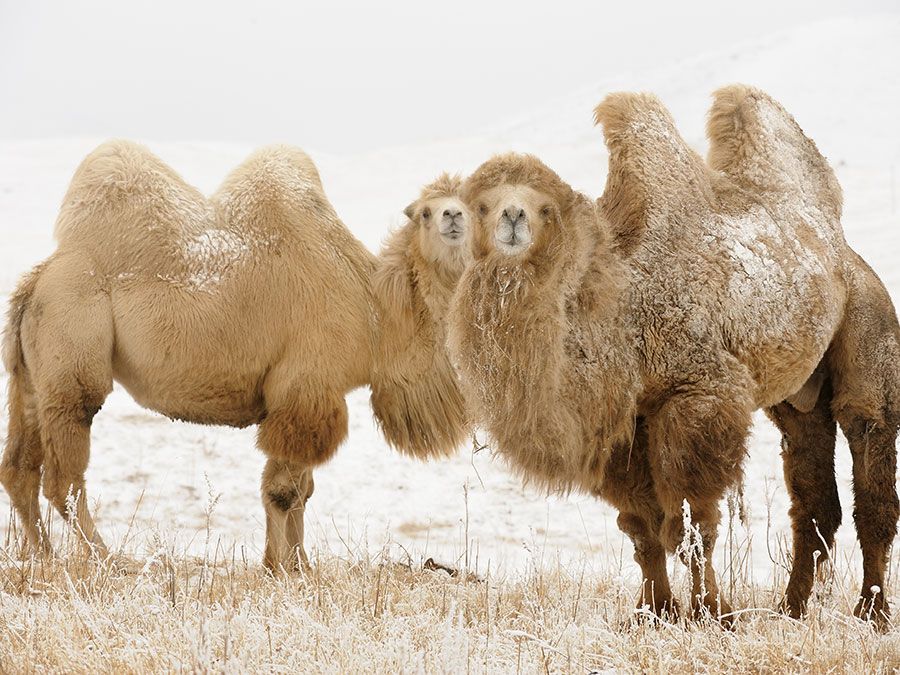This article highlights 10 animals with unique adaptations that allows them to survive in extreme conditions. Tardigrades, also known as water bears, can withstand temperatures as low as minus 459 degrees Fahrenheit and as high as 300 degrees Fahrenheit. Polar bears have a unique coat of fur that allows them to blend in with their surroundings and keep warm in cold temperatures. Camels can go several days without water, which is essential for survival in arid climates. Emperor penguins huddle together in groups to stay warm and protect themselves from the harsh conditions of Antarctica. Deserts tortoises can go up to a year without drinking water and store water in their bladders. Wood frogs can freeze themselves solid and then thaw out without any damage. Cockroaches can survive almost any condition, and African elephants can go up to several days without drinking water. Arctic wolves have a thick coat of fur that allows them to stay warm in cold temperatures, and crocodiles can hold their breath underwater for up to two hours. Studying these animals can also provide insights into how humans can adapt to extreme conditions and survive in harsh environments.
10 Animals That Can Survive Extreme Conditions
Animals have adapted to survive in various environments around the world. From the polar bear in the Arctic to the camel in the desert, animals have unique survival traits. Some animals have even developed the ability to withstand extreme conditions that would be unbearable for most creatures. Here are 10 animals that can survive in extreme conditions:
1. Tardigrades
Also known as water bears or moss piglets, tardigrades are microscopic creatures that can withstand extreme conditions. They are capable of surviving in temperatures as low as minus 459 degrees Fahrenheit and as high as 300 degrees Fahrenheit. Tardigrades can also survive extreme radiation and pressure environments, making them one of the toughest creatures on the planet.
2. Polar Bears
Polar bears are one of the few animals that can survive in the Arctic. They have a unique coat of fur that allows them to blend in with their surroundings and keep warm in cold temperatures. Polar bears are also excellent swimmers, which helps them hunt and navigate through icy waters.
3. Camels
Camels are well-known for their ability to survive in the desert. They can go several days without water, which is essential for survival in arid climates. Camels also have long eyelashes and nostrils that can close to protect against sandstorms.
4. Emperor Penguins
Emperor penguins are the largest penguins in the world and are found in Antarctica. They can withstand temperatures as low as minus 40 degrees Celsius and winds of up to 200 kilometers per hour. Emperor penguins huddle together in groups to stay warm and protect themselves from the harsh conditions.
5. Desert Tortoises
Desert tortoises are adapted to survive in arid climates. They can go up to a year without drinking water and store water in their bladders. Desert tortoises also dig underground burrows to protect themselves from the extreme heat and cold.
6. Wood Frogs
Wood frogs are found in North America and have a unique adaptation that allows them to survive freezing temperatures. They can freeze themselves completely solid and then thaw out without any damage. This adaptation helps them survive in cold climates.
7. Cockroaches
Cockroaches are known for their ability to survive almost any condition. They can survive without food for up to a month and without water for up to a week. Cockroaches can also live for several days without their head and can withstand radiation exposure.
8. African Elephants
African elephants are the largest land animals and are found in sub-Saharan Africa. They can withstand extreme temperatures and go up to several days without drinking water. African elephants also have excellent memories and can navigate through their environment with ease.
9. Arctic Wolves
Arctic wolves are found in the Arctic and have adapted to the harsh conditions. They have a thick coat of fur that allows them to stay warm in cold temperatures and can go several days without food. Arctic wolves also have excellent senses of hearing and smell, which helps them hunt prey.
10. Crocodiles
Crocodiles are found in tropical climates and have adapted to survive in water and on land. They can slow down their metabolism and go several months without food. Crocodiles also have a unique cardiovascular system that allows them to hold their breath underwater for up to two hours.
Conclusion
These animals have unique adaptations that allow them to survive in extreme conditions. From the freezing temperatures of the Arctic to the scorching heat of the desert, these animals have found ways to thrive. Studying these animals can also provide insights into how humans can adapt to extreme conditions and survive in harsh environments.
